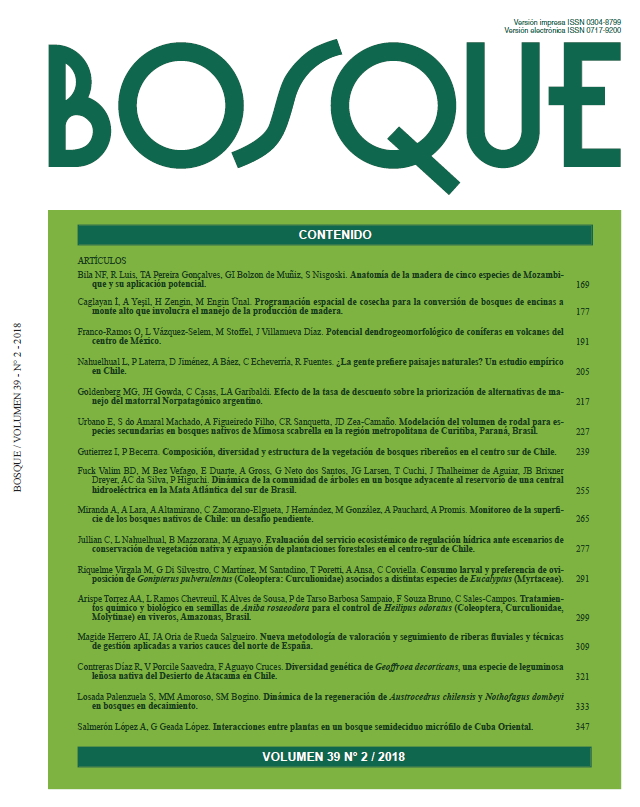Dendrogeomorphological potential of conifers on volcanoes of central Mexico
Main Article Content
Abstract
Geomorphological processes can influence the growth of the forest or individual trees. Based on dendrogeomorphological methods, we analyzed growth disturbances on several conifers affected by lahars and rockfalls, namely: Pinus hartwegii, Pinus leiophylla, Pinus ayacahuite, Abies religiosa and Juniperus monticola, localized on volcanic terrains of central Mexico. We also studied the age of these species. The main visible damages on trees by lahars were burial (35 %) and wounds (34 %) of stems. The main growth disturbances
on tree-rings are growth suppression (31 %) and tangential rows of traumatic resin ducts (30 %). In the case of rockfalls the most common visible damages on trees were wounds (61 %) and decapitation or loss of apex (20 %). The main growth disturbances were growth suppression (51 %), growth release (16 %) and injuries (15 %). The trunks of young trees had a superior number of impacts due to lahars and falling rocks than those presented by long-lived trees. Trees of A. religiosa have better dendrogeomorphological potential than Pinus spp. since they form tangential rows of traumatic resin ducts and are more sensitive to impacts and burial by rocks and sediment. For the determination of the minimum age and the stabilization period of landforms, the conifers analyzed were useful for up to hundreds of years, mainly Pinus hartwegii (500-600 years old) and Juniperus monticola (800-850 years old). Results show that dendrochronological methods can be useful in the study of geomorphological processes on temperate forests of central Mexico.

